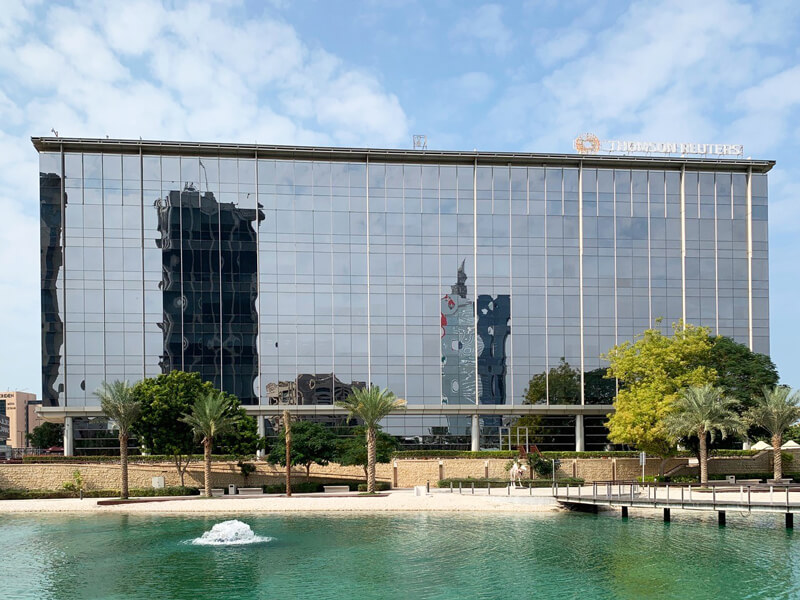Black Friday and User Acquisition: how to grow Your App
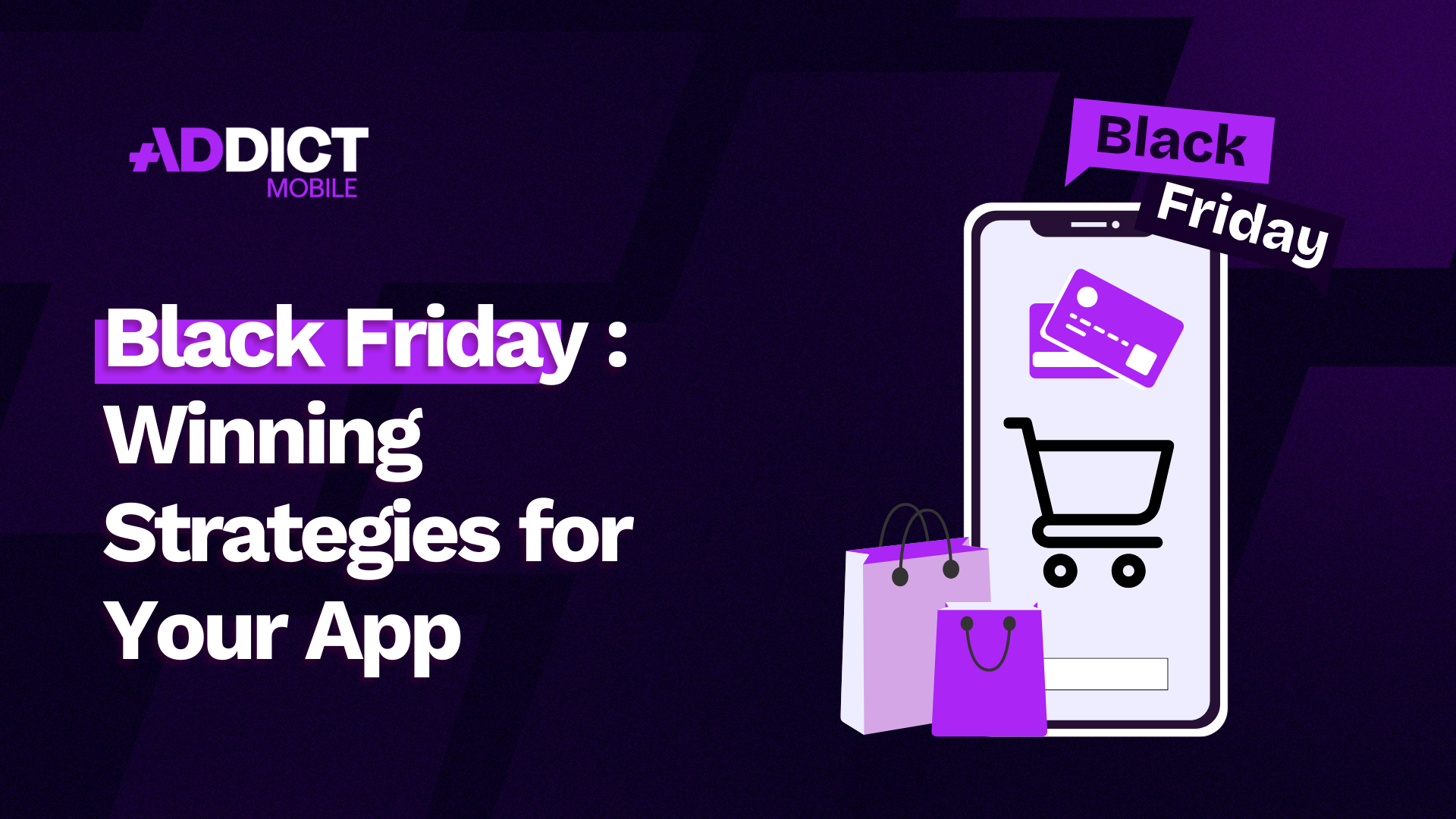
As every year, Black Friday is one of the biggest shopping events around. Many major brands take advantage of this period to capitalize on the holiday season, marking the start of early Christmas shopping.
While the official date falls on November 29, advertisers are getting more proactive, rolling out teasers well in advance.
So, how are acquisition costs shifting during this period? How can you run effective campaigns and maximize your app’s revenue? To make this key date a success, check out our tips in this article.
Key Takeaways
- Plan and invest early: start campaigns in late October, set proper budgets, and accept higher CPMs as conversions offset the cost.
- Maximize volume: avoid capping campaigns, increase bids, and use retargeting to re-engage effectively.
- Combine branding and acquisition: diversify audiences and feed algorithms with varied signals.
- Leverage DPAs and optimize ASO: automate product catalogs and adapt store pages to Black Friday codes.
- Strong creatives: highlight promotions and competitive advantages, adapting formats and styles to each platform.
Anticipation and Timing: The Black Friday Success Formula
A 2023 TikTok study reveals that nearly 40% of consumers start their holiday shopping over a month in advance. This early action is echoed in the 300% spike in content published the week before Black Friday.
Meanwhile, ad spend has hit new highs, with mobile purchases taking the lead. In 2023, mobile devices accounted for 54% of Black Friday’s online sales (source: Experian)
While brands previously focused on retail and web, they’re now increasingly shifting to mobile, which has shown impressive engagement rates in recent years.
For advertisers, the key is early preparation and campaign optimization to make the most of this pivotal period. One of Addict Mobile’s retail clients, for instance, saw their cost per install drop by 22% in 2023, while in-app ROAS increased, despite a 121% rise in budget compared to 2022. This is the direct result of a well-planned and optimized strategy.
Why Black Friday is a key period for user acquisition
Black Friday is a highly competitive time when every brand is racing to capture the attention of highly engaged users. With strong results come increased competition across major platforms.
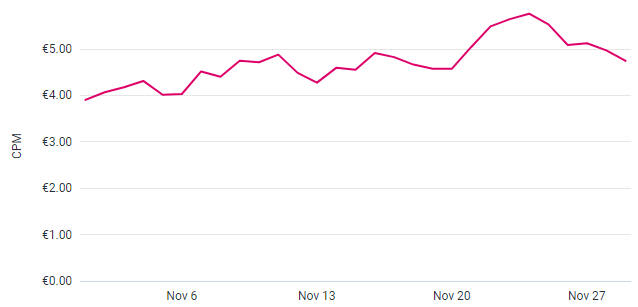
As seen in the example above, while acquisition costs are higher than usual, profitability holds steady thanks to users who are ready to buy.
The day after Black Friday, ad pressure gradually eases, leading to a 15-20% drop in CPM, which improves acquisition costs. This marks the first relief phase before the post-Christmas period, often called Q5.
What’s the right strategy for mobile acquisition?
At Addict Mobile, data from the past three years shows a 50% to 100% increase in CPM from November 1 up to Black Friday. Despite this, purchase conversion rates triple, proving it’s worthwhile for advertisers to implement a strategy dedicated to this key period.
With competition heating up, standing out on acquisition platforms is essential to ensure campaign profitability. The goal? Attract new users (and keep them from choosing competitors) while reactivating regular buyers so they convert during the sales.
This is especially true for apps, as users who’ve installed an app are far more likely to make repeat purchases there than on a website.
Our tips for an effective acquisition strategy
Tip 1: Don’t limit your budgets
To seize every opportunity and drive volume, avoid restricting your budgets. Leveraging measurement and attribution tools, you can track profitability while scaling up. Don’t hesitate to raise bids, whether for impressions (CPM) or downloads, to boost volume. By closely monitoring campaign profitability, you’ll quickly see if your ROAS is positive. Remember, capping your campaigns could mean missing out on a significant portion of your audience.
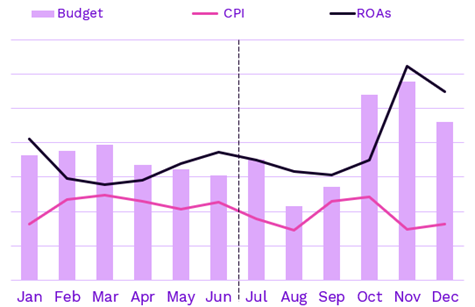
For one of Addict Mobile’s retail clients, ramping up investments at the end of the year delivered standout results:
- Lowered CPI
- Increased ROAS
This highlights the value of starting investment increases by late October to avoid too large a jump in November, with stronger pushes in November to capitalize on Black Friday.
Tip 2: Don’t fear high acquisition costs
Don’t shy away from higher acquisition costs, they’re likely to be offset by a much stronger purchase rate.
Tip 3: Retargeting is key
Re-engage users with tailored messages to encourage repeat conversions or nudge those who are undecided.
According to AppsFlyer’s The State of eCommerce App Marketing, targeting users within the first week post-install is especially effective, with conversion rates exceeding 75% and peaking at 40% on day one.
By customizing messages for each audience segment (deal-seekers, last year’s Black Friday buyers, inactive users, etc.), you’ll maximize your chances of re-engaging users and optimizing your results.
Tip 4: Combine branding and acquisition
Blend your branding strategy with your acquisition campaigns (and vice versa) to maximize impact.
For example, despite a strong year-round presence and rising CPMs toward the end of the year, Cheerz still met acquisition goals by diversifying its audiences. By launching branding campaigns that complemented acquisition efforts, the algorithms received new signals, opening up new acquisition opportunities and expanding monthly active users (MAUs).
This approach strengthens your brand’s presence in the minds of potential buyers, especially as they start planning holiday purchases.
Tip 5: Accurately measure your events
Make sure all the events you want to measure are correctly set up in your tools and double-check that the results are accurate. The last thing you want during peak season is to find out that your in-app events aren’t tracking properly!
Tip 6: Prepare your product catalog thoroughly
For platforms that allow it, make sure your product catalog is ready to go. This lets you integrate it directly into ads and automate campaigns with dynamic product ads (DPA). Catalog setups on Meta, TikTok, and Snapchat are quite similar, so streamline your efforts. DPA helps you better understand your audience and identify retargeting segments based on user behavior (add-to-cart, purchase abandonment, etc.) to re-engage them at the right moment.
For instance, for a retail client, using DPA generated 90% of the total volume during peak demand, cut CPM by half, and doubled ROAS compared to standard ads. DPA also enables cost-effective campaigns on iOS and Android, with deeplinks guiding users directly to product pages.
Cheerz, on the other hand, ran a catalog on Meta across multiple placements, customizing visuals with frames tailored to key periods. By adding dynamic elements (product names, promotions, price drops), the catalog grabs user attention and boosts conversions.
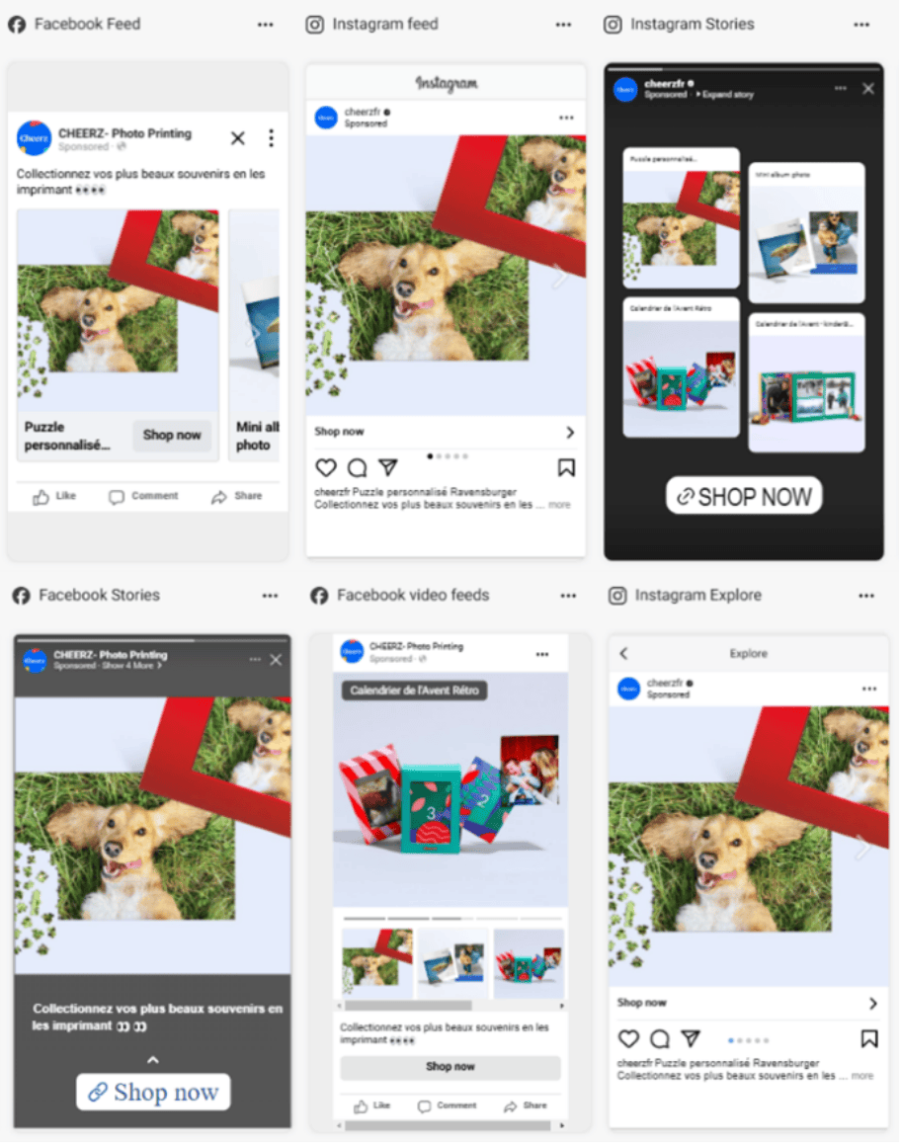
On the App Store Optimization (ASO) side
In the retail industry, many app publishers set up a dedicated store page for peak periods, featuring visuals that highlight promotions and a tailored description. The goal? To maximize the conversion rate from page visits to downloads.
Here are some tips to optimize your ASO:
- Use Custom Product Pages to direct paid users to specific visuals. This lets you maximize conversions during key periods without needing to submit a new app version.
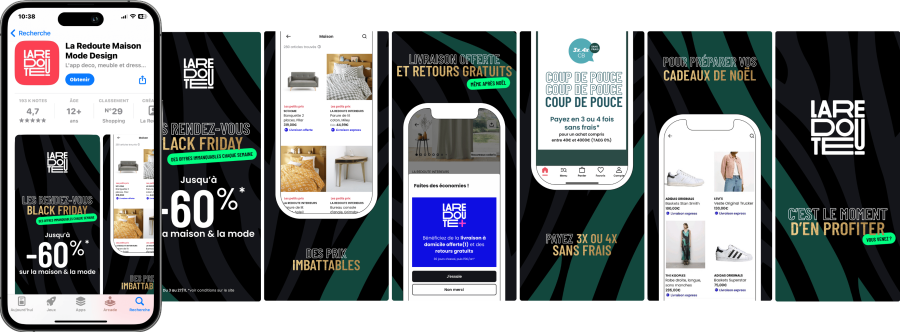
- Create an Event to keep a clear narrative on iOS and highlight app updates for organic users.
- Update your promotional text on iOS. This doesn’t require a new app submission, and since it appears at the top of your store page, it’s a perfect spot to highlight promotions or key events.
- Make your first screenshot or video count. These elements are essential for showcasing your offers upfront. Display promotions prominently to catch users’ attention in the store.
- Match your icon, visuals, and title to the color theme of your key event. Align these with the branding already on your website or app (e.g., black for Black Friday) to create visual consistency. This approach boosts download likelihood, especially for high-volume e-commerce and retail apps.
- A/B test your store pages on iOS. With up to 35 variations available, you can tailor your store page based on different target audiences.
Plan ahead for submission timelines and make these updates before Black Friday to take full advantage of the lead-up and peak around the event.
How to maximize creative impact?
- Follow your campaign’s theme closely. Keep visual consistency across all campaigns to reinforce brand communication unity.
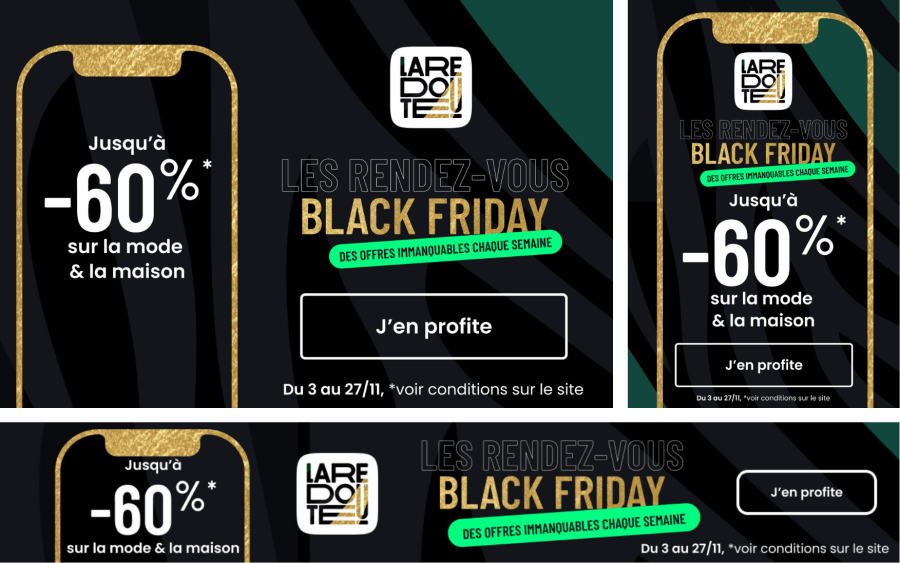
- Highlight your competitive advantages and promotions directly in your ads. Creative that showcases a strong product or offer will always outperform generic designs, especially in such a competitive period!
- Use video formats and stories to showcase your products in action.
- Static formats make an impact at a glance by effectively highlighting promotions, and they generally cost less than other formats.
- Adapt creatives to each platform: Use TikTok and Snapchat to build a creative strategy that resonates with your users (think UGC, challenges, etc.).
Black Friday is when it all happens. Strong preparation, impactful ASO and visuals, and a tailored acquisition strategy are your best assets to maximize results. By optimizing each step, you’ll be in the best position to capture attention and turn this period into a real growth driver for your app.
Need personalized support for your Black Friday campaigns? Contact us now and turn this season into a success!
NEWS
Article in relation

Our 5 Favorite Creative Tools on TikTok
Having good creatives is essential. But what truly makes the difference is knowing where to find inspiration and how to produce more efficiently...
Published on 10 December 2025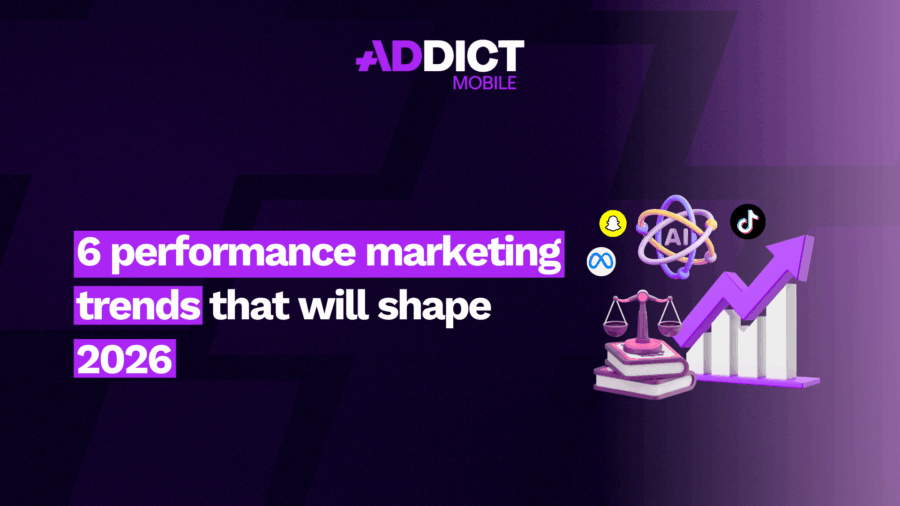
6 performance marketing trends that will shape 2026
2026 is shaping up to be a pivotal year for performance marketing. With new growth channels emerging, AI-driven automation accelerating, evolving measurement models,...
Published on 2 December 2025
Best ASO tools to grow your app store…
– by Oriane Ineza, Content Marketing Specialist at AppTweak In an increasingly competitive app market, visibility is everything, and a solid, comprehensive set...
Published on 30 November 2025

